S-3 medium range ballistic missile (France)
The decision to create ground-based missile systems was made in 1962 year. Together, several companies created a new project. weapons, subsequently called S-2. Tests of early prototypes of this ballistic missile have been conducted since 1966. The prototype, which became the benchmark for subsequent serial products, was tested at the end of the 1968 year. Almost simultaneously with the beginning of this test phase, a decision was made to develop the next project. Developed rocket S-2 is not fully satisfied with the customer. The main goal of the new project was to bring the characteristics to the required high level. First of all, it was necessary to increase the firing range and the power of the warhead.
The authors of the existing project were involved in the development of a promising MRBR, which received the designation S-3. The bulk of the work was entrusted to Société nationale industrielle aérospatiale (later Aérospatiale). In addition, some products were designed by Nord Aviation and Sud Aviation employees. In accordance with the requirements of the customer, in the new project should use some ready-made components and assemblies. In addition, the S-3 rocket was to be operated together with the already developed mine launchers. Due to the current economic situation, the French Defense Ministry could no longer afford to order a large number of completely new missiles. At the same time, this approach simplified and accelerated the development of the project.
For the first few years, the contracting companies have been studying the existing possibilities and shaping the appearance of a promising rocket, taking into account the requirements presented. This work was completed in 1972, after which an official order appeared for the creation of a project followed by testing and the deployment of mass production. It took several years to complete the design. Only in 1976, the first prototype of a new ballistic missile was built, which was soon planned to be put to the test.
The first version of the S-3 project received the designation S-3V. In accordance with the project, additionally designated by the letter “V”, an experienced rocket was built, intended for the first test launch. At the end of 1976, it was launched from the Biscaros polygon. Until March of the following year, French specialists completed seven more test launches, during which the work of individual systems and the entire missile system as a whole was checked. According to the test results, the S-3 project underwent some minor modifications that made it possible to begin preparations for the mass production and operation of new missiles.
Refinements of the project lasted only a few months. Already in July, 1979 of the year at the Biscaros test site conducted a test launch of the first batch of S-3 rocket. Successful launch allowed to recommend new weapons for adoption and deployment of full-fledged mass production in order to supply missiles to the troops. In addition, the July launch was the latest test promising MRBD. In the future, all launches of S-3 missiles were of a combat training nature and were intended to develop the skills of the personnel of strategic nuclear forces, as well as to test the operation of the equipment.
Due to the economic constraints, which to some extent impeded the development and production of advanced weapons, the technical specifications for the S-3 project indicated the maximum possible unification with existing weapons. This requirement was implemented by improving several existing aggregates of the S-2 MRSD while simultaneously using completely new units and products. To work with the new missile, the existing mine launchers had to undergo the minimum necessary changes.
According to the analysis of requirements and capabilities, the developers of the new rocket decided to maintain the overall architecture of the product used in the previous project. S-3 was supposed to be a two-stage solid-fuel rocket with a detachable warhead carrying a special warhead. Main approaches to the development of control systems and other devices remained. At the same time, it was planned to develop several new products, as well as to modify existing ones.
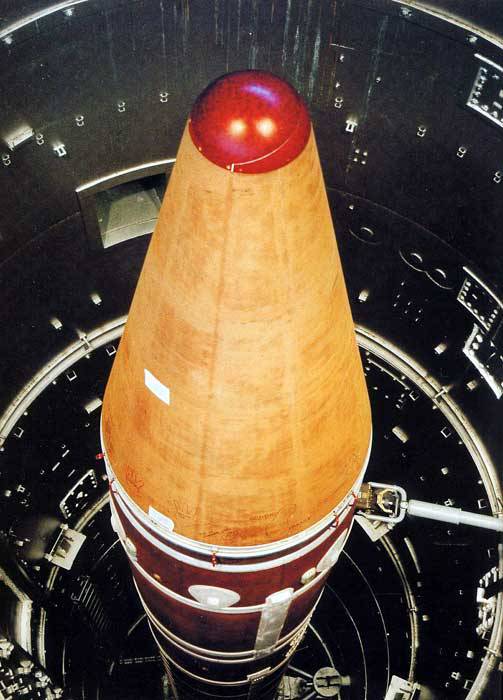
The head fairing of the rocket, placed in the launch shaft. Photo Rbase.new-factoria.ru
In combat form, the S-3 rocket was a 13,8 m long weapon with a cylindrical body with a diameter of 1,5 m. The head part of the body had a conical fairing. In the tail, aerodynamic stabilizers with a 2,62 scale were preserved. The launch mass of the rocket was equal to 25,75 t. Of these, 1 t fell on the combat unit and the enemy’s anti-missile defenses.
As the first stage of the S-3 rocket, it was proposed to use the upgraded and improved product SEP 902, which performed the same functions as part of the S-2 rocket. This stage had a metal case, which also served as an engine case, 6,9 m long and 1,5 external diameter. The stage case was made of heat-resistant steel and had walls from 8 to 18 mm thick. The tail part of the step was equipped with trapezoid stabilizers. In the tail bottom windows were provided for the installation of four swinging nozzles. The outer surface of the case was covered with a layer of heat-shielding material.
The upgrade of the SEP 902 stage consisted in a slight change in its design in order to increase the internal volumes. This made it possible to bring the stock of solid blend fuel to 16,94 t. By consuming the increased charge, the upgraded P16 engine could have worked 72 seconds, showing greater thrust compared to the original modification. Reactive gases were discharged through four conical nozzles. To control the thrust vector during the operation of the first-stage engine, actuators were used that were responsible for moving the nozzles in several planes. Similar management principles have already been used in the previous project.
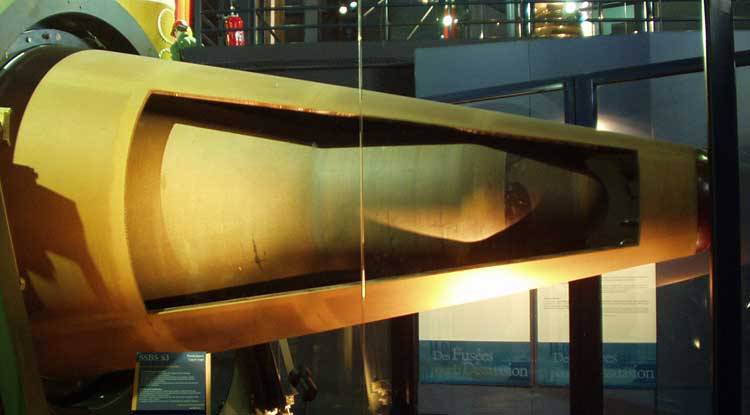
Head fairing and warhead. Photo Rbase.new-factoria.ru
As part of the S-3 project, a new second stage was developed, which received its own designation Rita-2. When creating this product, the French designers abandoned the use of a relatively heavy metal body. A cylindrical body with a diameter of 1,5 m, containing a charge of solid fuel, was proposed to be made of fiberglass by winding technology. The outer surface of such a housing has received a new heat-shielding coating with enhanced characteristics. It was proposed to place the instrument compartment on the upper bottom of the case, the only fixed nozzle was placed on the lower one.
The second stage received a solid-fuel engine with a fuel charge weighing 6015 kg, which was enough for 58 from work. Unlike the SEP 902 product and the second stage of the S-2 rocket, the Rita-2 product did not have nozzle motion control systems. To control the pitch and yaw was proposed equipment responsible for the injection of freon in the supercritical part of the nozzle. By changing the nature of the outflow of reactive gases, this equipment influenced the thrust vector. The roll control was carried out using additional small oblique nozzles and associated gas generators. For discharge of the head part and braking on a given part of the trajectory, the second stage received a counter-nozzle.
The special compartment of the second stage housed the containers for the means to overcome the missile defense. False targets and dipole reflectors were transported there. Resetting the means of overcoming missile defense was carried out together with the separation of the head, which reduced the likelihood of successful interception of a real warhead.
Between themselves, two stages, as on the previous rocket, were connected using a cylindrical adapter. An elongated charge passed along the wall and the power elements of the adapter. At the command of the missile control system, it was undermined with the destruction of the adapter. The separation of the steps was also facilitated by the preliminary inflation of the interstage compartment.
An autonomous inertial navigation system was located in the instrument compartment connected to the second stage. With the help of gyroscopes, it had to track the position of the rocket in space and determine the compliance of the current path with the required one. In case of deviation, the calculator had to produce commands for the first-stage steering gears or the gas-dynamic systems of the second. Also automatic control was responsible for the separation of the steps and reset the head part.
An important innovation of the project was the use of a more advanced computing complex. In his memory, you can enter data for several purposes. In preparation for the launch, the calculation of the complex had to choose a specific target, after which the automation automatically drove the rocket to the given coordinates.
MRSD S-3 received a conical head fairing, which remained in place until the combat unit was reset. Under the fairing, which improves flight data of the rocket, there was a warhead with a complex-shaped hull, formed by cylindrical and conical units with ablative protection. A TNB 61 monoblock warhead with a 1,2 MT power thermonuclear charge was used. The warhead was equipped with a fuse, providing air and contact detonation.
The use of more powerful engines and a reduction in starting mass, as well as the improvement of control systems, led to a noticeable increase in the basic characteristics of the missile complex in comparison with the previous S-2. The maximum range of the S-3 rocket was brought to 3700 km. The circular deviation was reported at the level of 700 m. During the flight, the rocket rose to an altitude of 1000 km.
The medium range missile S-3 was a bit smaller and lighter than its predecessor. At the same time, it was possible to operate with existing launchers. Since the late sixties, France has built special underground complexes, as well as various auxiliary facilities for various purposes. As part of the deployment of the S-2 complex, 18 launchers were built, controlled by two command posts - nine missiles for each.
The silo launcher of the S-2 and S-3 rockets was a large reinforced concrete structure recessed into 24 m. On the surface of the earth there was only the head of the structure surrounded by a platform of the required dimensions. In the central part of the complex was a vertical shaft, necessary for the placement of the rocket. There the starting table of a ring design, suspended on system of cables and hydraulic jacks for alignment of the rocket, was located. Also provided for the site to service the rocket. The elevator well and a number of auxiliary premises used when working with the rocket were placed near the rocket shaft. On top of the launcher was closed 140-ton reinforced concrete cover. During maintenance work, the lid was opened with hydraulics, and for combat use - with a powder pressure accumulator.
In the design of the launcher, some measures were used to protect the rocket engines from the reactive gases. The launch was to be carried out by the gas-dynamic method: due to the work of the sustainer engine, launched directly on the launch pad.
A group of nine missile launchers was controlled from a common command post. This structure was located at a great depth at some distance from the rocket mines and equipped with means of protection against the enemy's strike. The duty shift command post consisted of two people. As part of the S-3 project, some refinement of the complex management systems was proposed, making it possible to use new functions. In particular, the duty officers should have been able to select targets from the missiles previously entered into the memory.
As is the case with the S-2 missiles, the S-3 products were proposed to be stored unassembled. The first and second stages, as well as combat units were to be in sealed containers. In preparing the rocket for putting on duty in a special workshop, two stages were docked, after which the resulting product was delivered to the launcher and loaded into it. Next, a separate unit was transported by the combat unit.
In April, 1978, the first group of the 05.200 missile brigade, stationed on the Albion plateau, received an order to prepare to receive the S-3 MRSD, which in the near future should replace the S-2. About a month later, the industry delivered the first new type of missiles. The combat units were ready for them only in the middle of 1980. While the combatant units were preparing for the operation of new equipment, the first combat training launch was carried out from the Biscaros test site. The first rocket launch involving strategic nuclear forces calculations took place at the end of 1980. Soon after, the first group of the brigade was on duty using the latest weapons.
At the very end of the seventies, it was decided to develop an improved modification of the existing missile system. The technical characteristics of the S-3 product and launchers were completely satisfactory for the military, but resistance to the enemy’s nuclear missile strikes was already considered insufficient. In this regard, the development of the S-3D rocket complex (Durcir - “Strengthened”) began. Through various improvements in the design of the rocket and the mine installation, the resistance of the complex to the damaging factors of a nuclear explosion was increased. The likelihood of preserving the missiles after hitting the enemy was increased to the required level.
The full-fledged design of the S-3D complex started in the middle of 1980. At the end of 81, the first rocket of the new type was handed over to the customer. Until the end of 1982, the second group of the 05.200 brigade underwent a complete modernization under the “reinforced” project and began combat duty. At the same time, the operation of the S-2 type missiles was completed. After the update began the first group, which ended in the autumn of next year. In the middle of 1985, the 05.200 brigade received a new name - 95-I squadron of strategic missiles of the French Air Force.
According to various sources, until the end of the eighties, the French defense industry produced about four dozen S-3 and S-3D missiles. Some of these products were constantly on duty. 13 missiles were used during combat training launches. Also, a certain number of products were constantly present in the warehouses of the missile compound.
Even during the deployment of the S-3 / S-3D complex, the French military department began to make plans concerning the further development of strategic nuclear forces. It was obvious that MRBD of existing types in the foreseeable future will no longer meet current requirements. In this regard, already in the mid-eighties, a program was launched to develop a new missile system. As part of the SX or S-4 project, it was proposed to create a system with enhanced characteristics. Also considered the possibility of developing a mobile missile system.
However, in the early nineties, the military-political situation in Europe changed, which, among other things, led to a reduction in defense spending. The reduction of the military budget did not allow France to continue the development of promising missile systems. By the mid-nineties, all work on the SX / S-4 project was discontinued. At the same time, the development of missiles for submarines was planned to continue.
In February, 1996, French President Jacques Chirac announced the start of a radical restructuring of strategic nuclear forces. As a means of deterrence it was now planned to use submarine missiles and air-based complexes. In the new look of the nuclear forces there was no place for mobile ground or mine missile systems. In fact in stories missiles S-3 was put an end.
Already in September, 1996, 95-I squadron stopped the operation of existing ballistic missiles and began to write them off. The following year, the first group of the squadron completely stopped service, in 1998 the second. Due to the decommissioning of weapons and the demolition of existing structures, the compound was disbanded as superfluous. The same fate befell some other units that were armed with mobile missile systems of the operational-tactical class.
By the time the strategic nuclear forces reform began, France had less than three dozen S-3 / S-3D missiles. Two-thirds of these weapons were on duty. After decommissioning, almost all of the remaining missiles were disposed of. Only a few products were deactivated and made museum exhibits. The state of the exhibition samples allows you to study the design of the missiles in detail. So, in the Paris Museum aviation and astronautics, the rocket is demonstrated in a disassembled form into separate units.
After the decommissioning of the S-3 missiles and the dismantling of the 95 squadron, the land component of the French strategic nuclear forces ceased to exist. Deterrence tasks are now assigned to combat aircraft and ballistic missile submarines. New projects of land-based systems are not being developed and, as far as we know, are not even planned.
On the materials of the sites:
http://rbase.new-factoria.ru/
http://astronautix.com/
http://capcomespace.net/
http://globalsecurity.org/
http://nuclearweaponarchive.org/
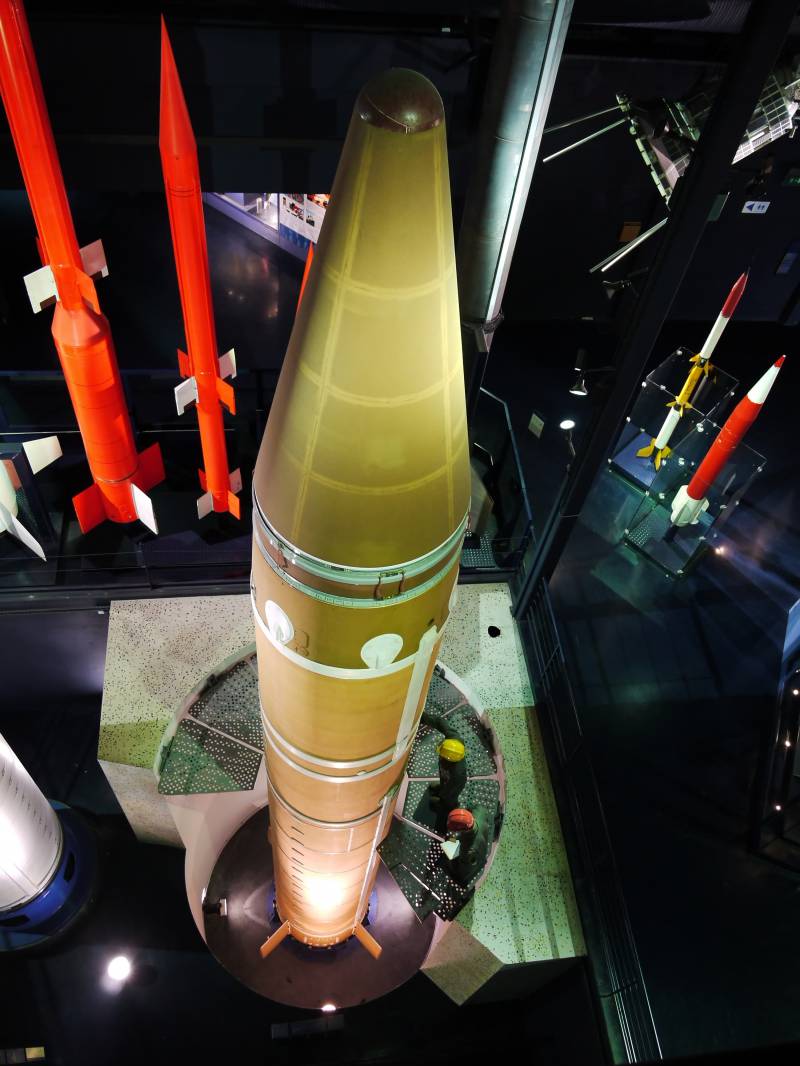
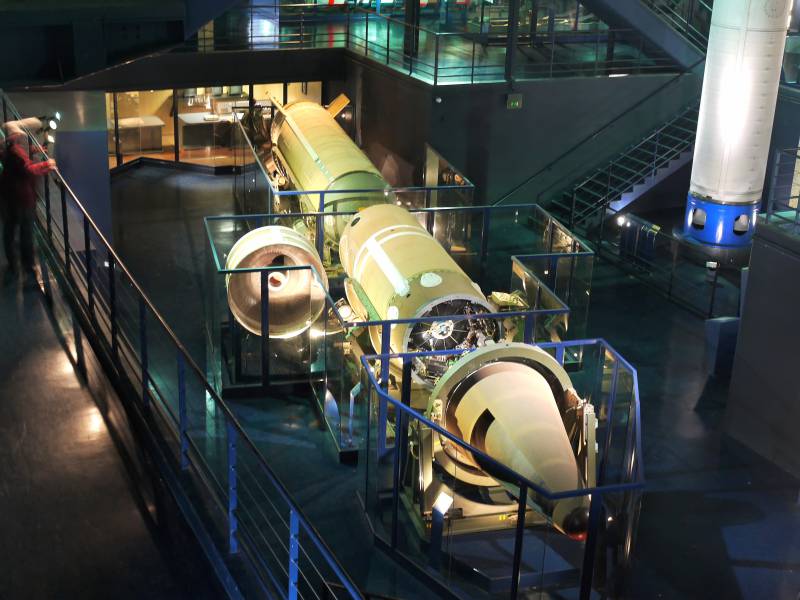
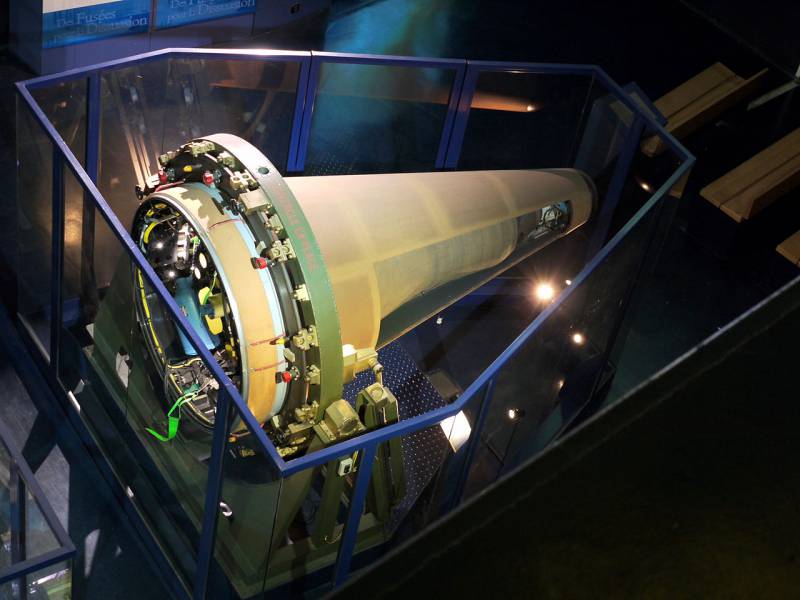
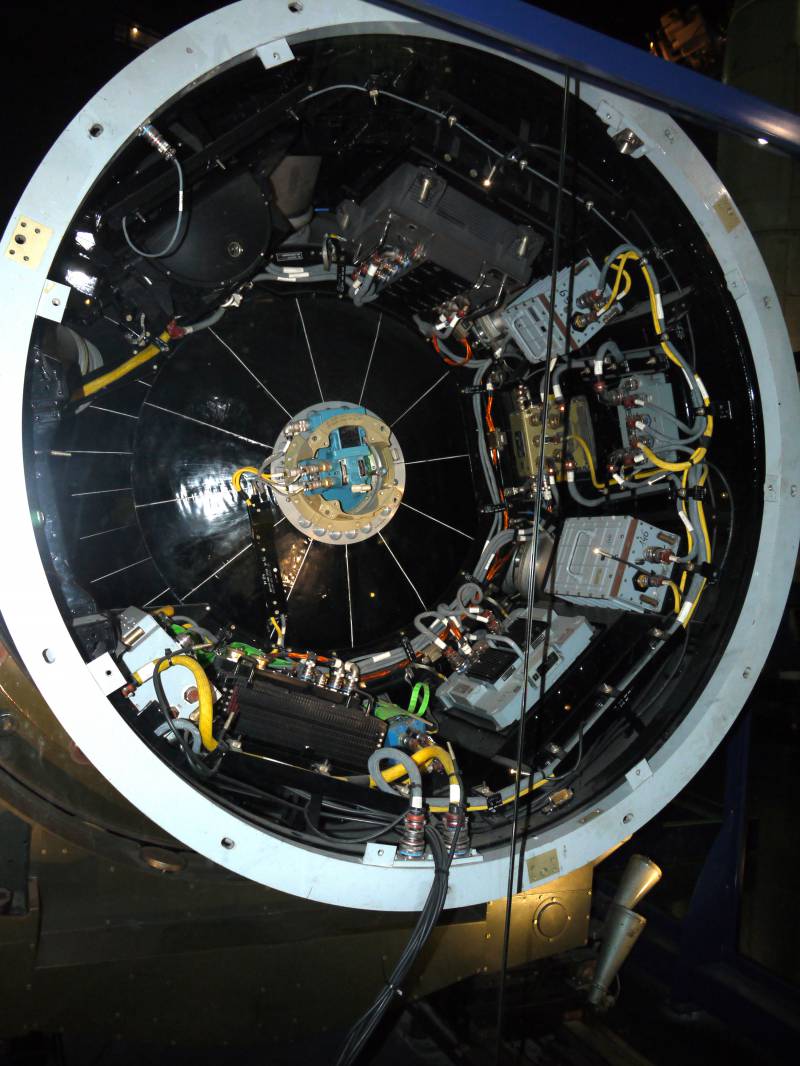
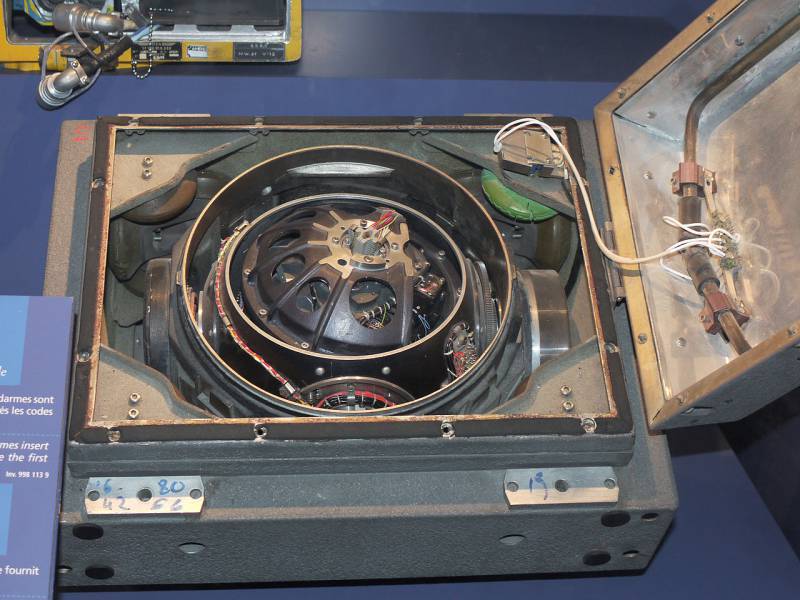
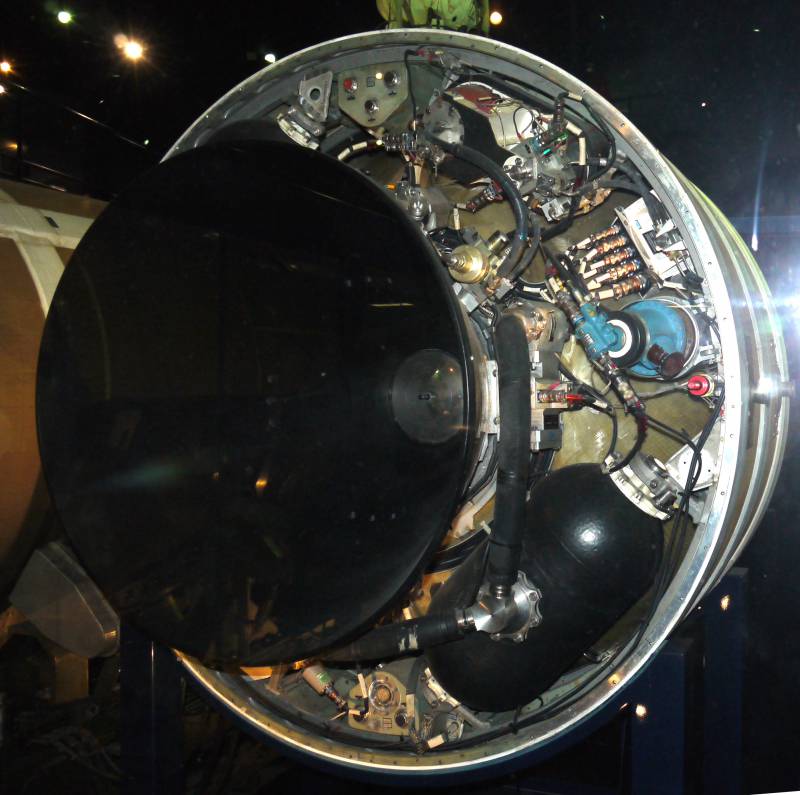
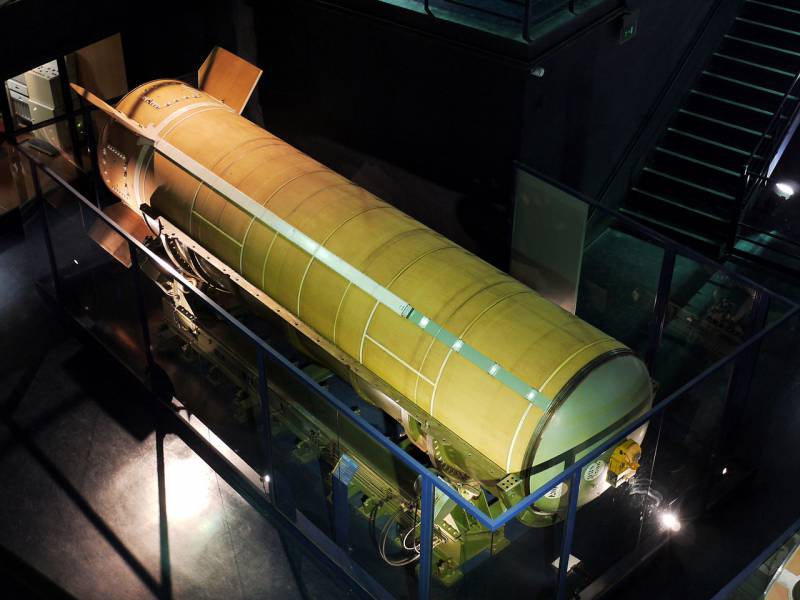
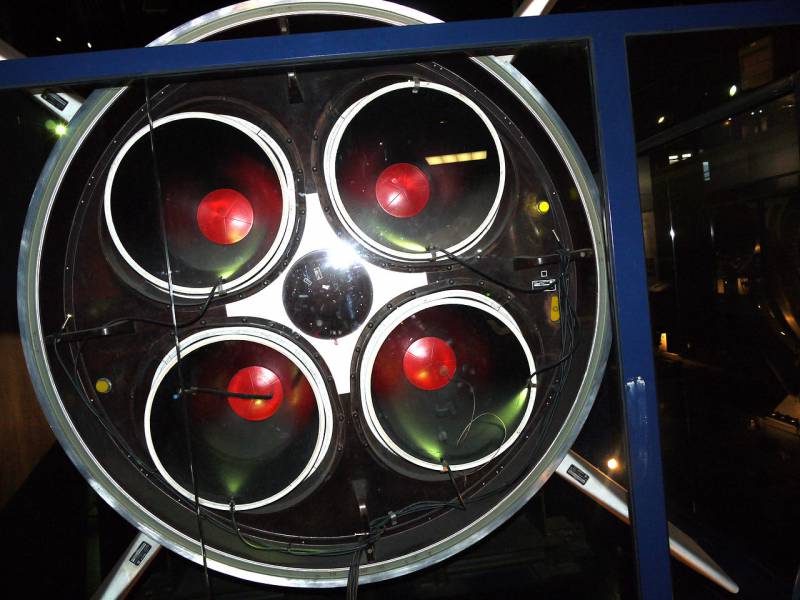
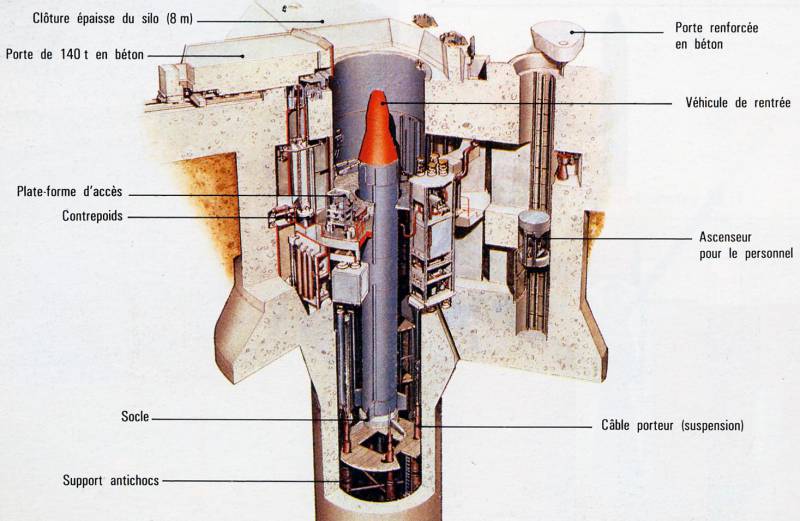
Information